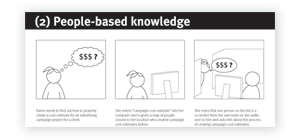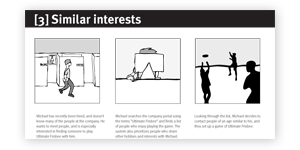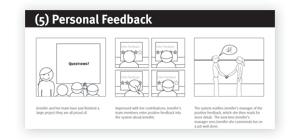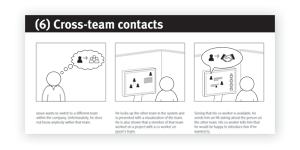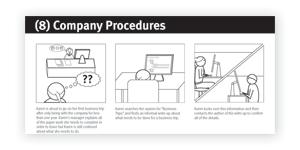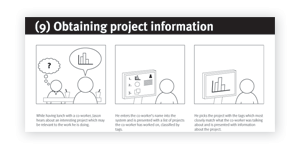Needs Validation
Speed Boards
The first step in the needs validation process is to create ‘Speed Boards’ that depict a scenario in which the potential user encounters a need and then uses our solution to address that need. We chose scenarios based on mapping our solution ideas to the needs they address. We then picked the persona that would most express the need, and used that persona to help generate the scenarios. In our needs validation sessions we eliminated references to the personas when presenting the Speed Boards to our users, but within our team we retained the link between personas and scenarios so that we still grounded our scenarios in both the insights of the work we found in our research as well as in the types of users we encountered.
Overall, we created 10 different scenarios which together address the majority of our insights drawn from the user research. The themes incorporated in these scenarios were:
- Cross-team contacts
- Informal responsibilities
- Training recommendations
- Company procedures
- People-based knowledge
- Identify talent gaps
- Obtaining project information
- Similar interests
- Assigning mentors
- Personal feedback
For conducting the needs validation, we then recruited eight participants who are or had worked in large to mid-size companies and who fit into the millennial age range. We asked each participant to go through all the scenarios in random order while thinking aloud and commenting on the scenarios. We specifically paid attention to the initial reactions of our participants which gave us valuable hints on the believability of the situation and general desirability of the solution. We recorded positive and negative reactions as well as general comments about each scenario. After working through the entire set, we asked our participants to identify which scenarios particularly stood out and those which seemed not useful at all. After each session, our team ranked the scenarios according to a five-point scale, with 5 having the most positive reactions and 1 having the most negative reactions.
Results of the speed boards can be found on the findings page.


